“When eaten for a long time, it brightens the facial tone, lightens the body and prevents aging. It eases the inner organs by helping their movements, and makes the whole body feel comfortable. It helps cure colds, headaches and dizziness.”
This is how the medicinal effects of chrysanthemum are described in the "Bonchogangmok" (본초강목, 本草綱目), a Chinese medical book written during the Ming Dynasty (1368-1644).
Chrysanthemums are one of the representative flowers that can be found everywhere in Korea especially in October and November.
They are beautiful and have medicinal qualities, too. They're loved by many people and used to make many delicious dishes, such as chrysanthemum liquor and chrysanthemum pancakes.
In the "Dongguk Sesigi" (동국세시기, 東國歲時記) (1849), or "Record of Seasonal Customs in the Eastern Kingdom," a recipe for chrysanthemums can be found. The book says that, “On Sept. 9, the day of Jongyang by the lunar calendar, people have a custom of making liquor and pancakes with chrysanthemums."
Chrysanthemum liquor can help to lighten the body and clear the mind. People loved the beverage as a liquor that promoted longevity, as it helps to clean the blood, detoxify and expand peripheral blood vessels.
When sipped for the first time, you can taste the sour yet subtle and beautiful fragrance spreading through your mouth.
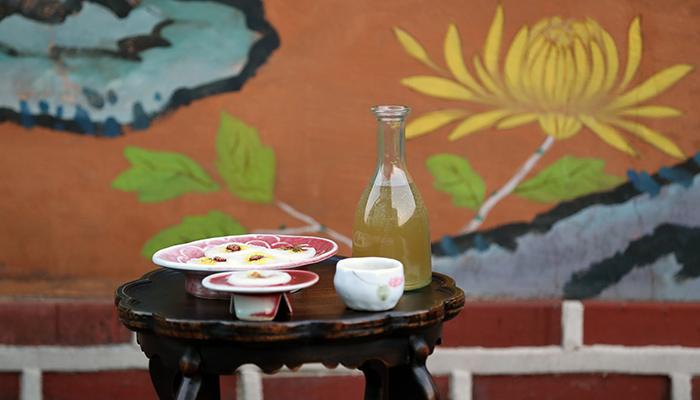
** Ingredients
1 kg glutinous rice
200 g malt (powdered)
20 g dried chrysanthemum
1.2 liters boiled and cooled water
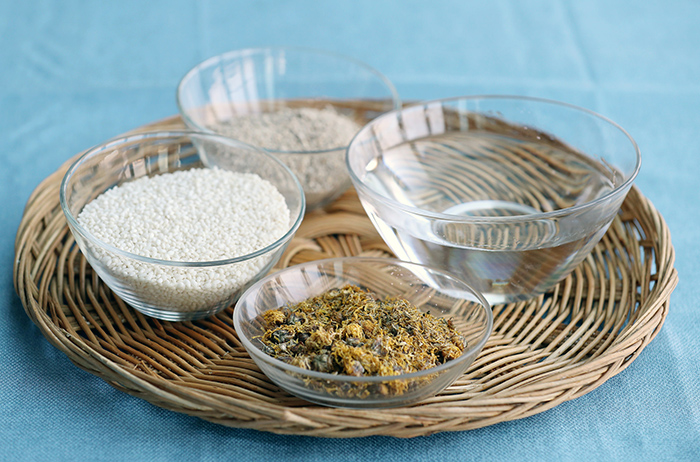
** Recipe
1. Wash the rice in water and soak it in clean water for more than 5 hours.
2. Remove the water from the rice for about 1 hour.
3. Put the rice in a heated steamer and cook the rice for 40 minutes.
4. Cool the steamed rice. Add the malt and dried chrysanthemums to the cooled rice and mix it all together. Put the mixture inside a jar.
5. Leave the jar in temperatures between 23 and 25 degrees Celsius for between 10 and 15 days so that the mixture can ferment.
6. After the fermentation, pour it all into a yongsu, a round bamboo bottle used for filtering traditional Korean liquors. Leave it there for 1 day. When a clear liquor appears inside the bamboo bottle, collect the liquor.
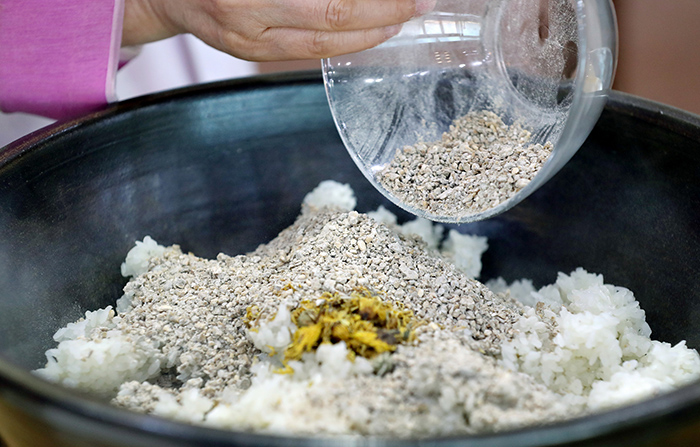
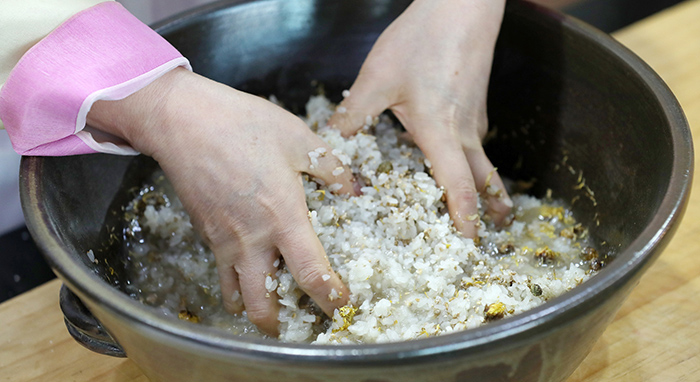
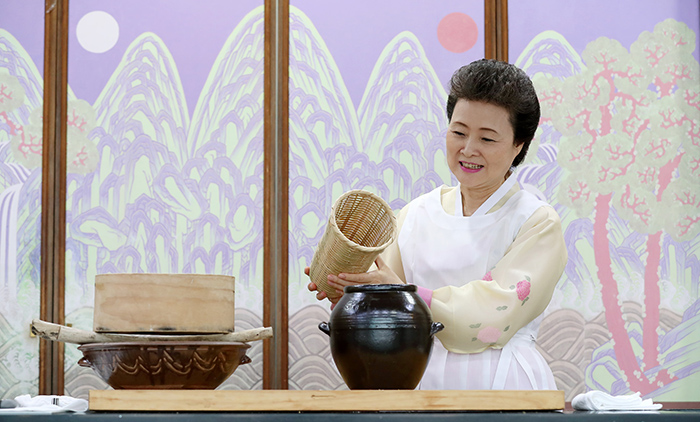
Managed by Yoon Sojung
Korea.net Staff Writer
Photos: Jeon Han Korea.net Photographer
In cooperation with the Institute of Traditional Korean Food (ITKF)
arete@korea.kr
This is how the medicinal effects of chrysanthemum are described in the "Bonchogangmok" (본초강목, 本草綱目), a Chinese medical book written during the Ming Dynasty (1368-1644).
Chrysanthemums are one of the representative flowers that can be found everywhere in Korea especially in October and November.
They are beautiful and have medicinal qualities, too. They're loved by many people and used to make many delicious dishes, such as chrysanthemum liquor and chrysanthemum pancakes.
In the "Dongguk Sesigi" (동국세시기, 東國歲時記) (1849), or "Record of Seasonal Customs in the Eastern Kingdom," a recipe for chrysanthemums can be found. The book says that, “On Sept. 9, the day of Jongyang by the lunar calendar, people have a custom of making liquor and pancakes with chrysanthemums."
Chrysanthemum liquor can help to lighten the body and clear the mind. People loved the beverage as a liquor that promoted longevity, as it helps to clean the blood, detoxify and expand peripheral blood vessels.
When sipped for the first time, you can taste the sour yet subtle and beautiful fragrance spreading through your mouth.

Chrysanthemum liquor and chrysanthemum pancakes are seasonal dishes to enjoy the elegance of the late autumn in Korea.
** Ingredients
1 kg glutinous rice
200 g malt (powdered)
20 g dried chrysanthemum
1.2 liters boiled and cooled water

The main ingredients in chrysanthemum liquor are dried chrysanthemums, glutinous rice, malt and water.
** Recipe
1. Wash the rice in water and soak it in clean water for more than 5 hours.
2. Remove the water from the rice for about 1 hour.
3. Put the rice in a heated steamer and cook the rice for 40 minutes.
4. Cool the steamed rice. Add the malt and dried chrysanthemums to the cooled rice and mix it all together. Put the mixture inside a jar.
5. Leave the jar in temperatures between 23 and 25 degrees Celsius for between 10 and 15 days so that the mixture can ferment.
6. After the fermentation, pour it all into a yongsu, a round bamboo bottle used for filtering traditional Korean liquors. Leave it there for 1 day. When a clear liquor appears inside the bamboo bottle, collect the liquor.

Steam the glutinous rice and cool it. Mix in the chrysanthemums, the malt and the steamed rice all together.

Add water and mix it all gently together with your hands. Make sure to not damage the rice in order to get a clear liquor.

After fermentation, place the yongsu, the bamboo bottle-shaped tool, inside the jar. When a clear liquor appears inside the tool, collect it.
Managed by Yoon Sojung
Korea.net Staff Writer
Photos: Jeon Han Korea.net Photographer
In cooperation with the Institute of Traditional Korean Food (ITKF)
arete@korea.kr
Most popular
- Grammy-winning producer calls Suga of BTS 'amazing artist'
- 'Universal love, family' themes fuel success of 'King of Kings': director
- Council sets minimum hourly wage in 2026 at KRW 10,320
- Expansion of foreign app system raises tourist convenience
- Nat'l population diversity rose nearly 8% from 2018-22: study
